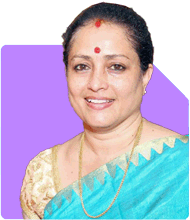50 year old experiencing persisting chest pain despite medication and exercise
Dr Chandrakant Lahariya | Answer |Ask -Follow
Diabetologist, Consultant Physician, Vaccine Expert - Answered on Oct 21, 2024
The Delhi-based senior physician also has over 20 years of experience in hypertension, thyroid disorders and respiratory illnesses.
An expert on common health issues and the preventive aspects of medicine, he has co-authored the book, Till We Win: India's Fight Against The Covid-19 Pandemic.
Dr Chandrakant completed his MBBS from the Maulana Azad Medical College, New Delhi, and his MD from the Lady Hardinge Medical College, New Delhi.
He has a DNB (National Board of Examination, 2009) certification and a diploma in vaccinology from Institut Pasteur, Paris.... more

I am age of 50, I went to hospital last month back due to chest pain, as per doctor advice I done ECG, tmt , angiography all are normal, later days I got BP 170/100 ,so doctor to start BP medicine,as per his advice I started , now I am taking Tazolac Am 40mg and prolomet 25mg after morning food, still my chest pain, again I went to hospital sir told nothing happened it is muscle pain it will go naturally, do daily 1hr walking that I am doing from so many years, still it is paining what to do......
It will be a good idea to visit a physician for in person consultation. Sometimes a detailed history taken by doctor can elicit some health issues.
Best wishes,
Dr Chandrakant Lahariya
Centre for Health: The Specialty Practice,
Safdarjung Enclave, New Delhi
You may like to see similar questions and answers below
Dr Chandrakant Lahariya | Answer |Ask -Follow
Diabetologist, Consultant Physician, Vaccine Expert - Answered on Oct 24, 2024
Dr Karthiyayini Mahadevan | Answer |Ask -Follow
General Physician - Answered on Oct 21, 2024
Nitin Narkhede |113 Answers |Ask -Follow
MF, PF Expert - Answered on Dec 15, 2025
Nitin Narkhede |113 Answers |Ask -Follow
MF, PF Expert - Answered on Dec 15, 2025
Ramalingam Kalirajan |10893 Answers |Ask -Follow
Mutual Funds, Financial Planning Expert - Answered on Dec 15, 2025
Ramalingam Kalirajan |10893 Answers |Ask -Follow
Mutual Funds, Financial Planning Expert - Answered on Dec 15, 2025
Radheshyam Zanwar |6746 Answers |Ask -Follow
MHT-CET, IIT-JEE, NEET-UG Expert - Answered on Dec 15, 2025
Ramalingam Kalirajan |10893 Answers |Ask -Follow
Mutual Funds, Financial Planning Expert - Answered on Dec 15, 2025
Ramalingam Kalirajan |10893 Answers |Ask -Follow
Mutual Funds, Financial Planning Expert - Answered on Dec 15, 2025
Ramalingam Kalirajan |10893 Answers |Ask -Follow
Mutual Funds, Financial Planning Expert - Answered on Dec 15, 2025
Samraat Jadhav |2508 Answers |Ask -Follow
Stock Market Expert - Answered on Dec 15, 2025
Ramalingam Kalirajan |10893 Answers |Ask -Follow
Mutual Funds, Financial Planning Expert - Answered on Dec 15, 2025
























